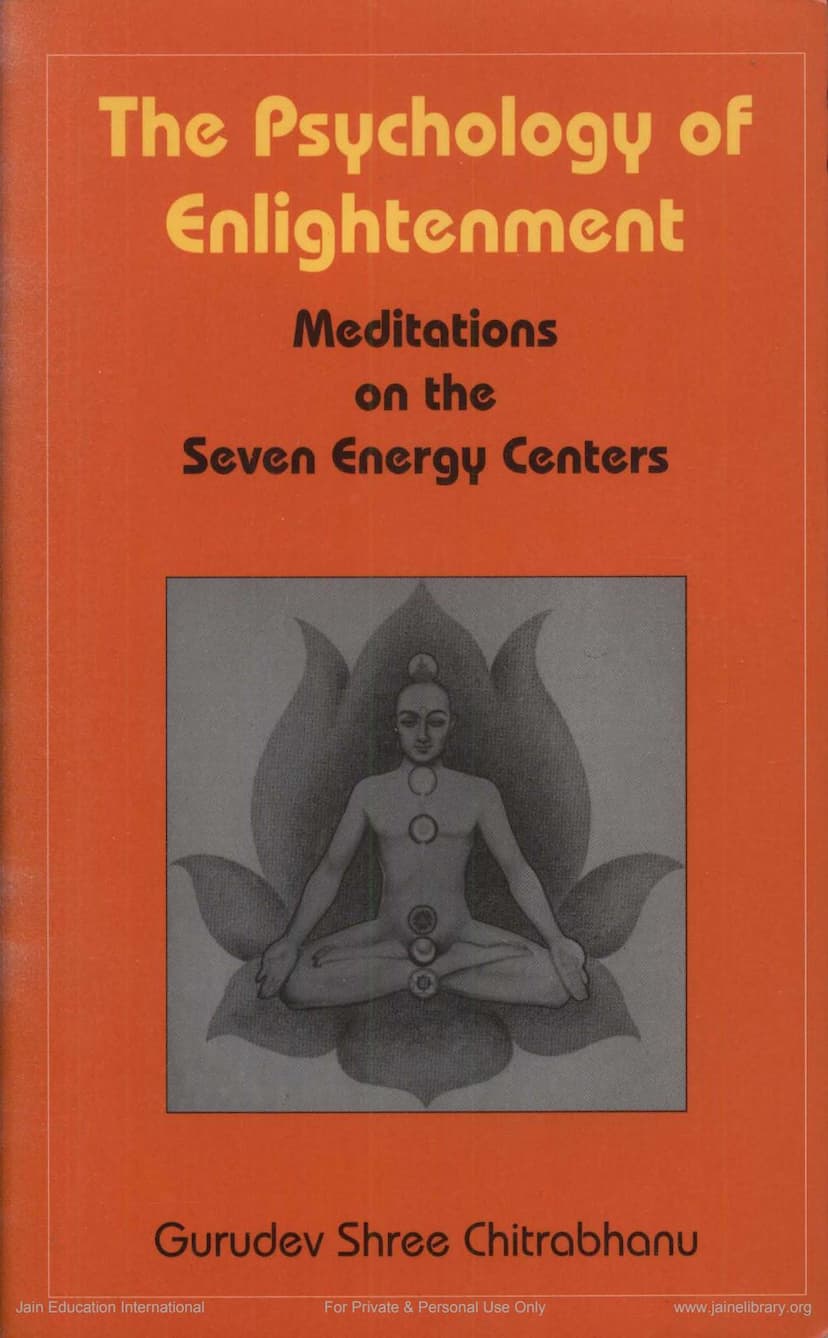Psychology Of Enlightenment
Added to library: September 2, 2025

Summary
Here's a comprehensive summary of "The Psychology of Enlightenment: Meditations on the Seven Energy Centers" by Gurudev Shree Chitrabhanu, based on the provided text:
Overall Purpose and Approach:
"The Psychology of Enlightenment" is a meditation handbook designed to guide individuals in unlocking and experiencing their inner energy through a system of seven energy centers within the body. These centers, often referred to as chakras, correspond to different levels of consciousness and aspects of our inner life. The book, based on lectures by Gurudev Shree Chitrabhanu, teaches that blockages in these energy centers, caused by fears, desires, and misperceptions, can be removed through meditation, thereby restoring the flow of creative life-energy. The practice involves a combination of visualization, mantra recitation, and focused intention.
Key Concepts and Structure:
The book is structured around a progression through the seven energy centers, with each chapter dedicated to a specific center:
- Chapter 1: Muladhara - The Seat of Security: Located at the base of the spine, this center is associated with the earth element and relates to our foundation, security, and self-reliance. The text emphasizes overcoming insecurity stemming from external dependencies and identifying with our inner divinity. The meditation involves visualizing a yellow square or cross and reciting "shivam shānti" (benediction and peace).
- Chapter 2: Swadhisthāna - Source of Creative Potential: Situated in the pelvis, this center is linked to the water element and represents our creative energy, sexuality, and origin. The book encourages moving beyond guilt associated with sexuality and embracing it as a sacred aspect of life. The meditation involves visualizing a silver crescent moon and reciting "mano ramam" (mind-player).
- Chapter 3: Manipura - The Indweller, Your Hidden Power: Found at the navel, this center is connected to the fire element and signifies power, expression, and expansion. It emphasizes tapping into our inner power and transcending the ego's limitations. The meditation involves visualizing a red and yellow flame or a triangle and reciting "rām-rām-rām" (the indweller).
- Chapter 4: Anahata - Love, The Ever-Expanding Circle: Located at the heart, this center is associated with the air element and represents love, compassion, and universal connection. The text highlights the importance of unconditional love and acceptance, moving beyond expectations. The meditation involves visualizing a blue circle and reciting "sohum" (I am That), linking it to the breath.
- Chapter 5: Vishuddha - Abundance, Experiencing the Limitless: Found in the throat area, this center is linked to the space element and signifies purity, abundance, and clear communication. It emphasizes letting go of resentments and experiencing the vastness of space within. The meditation involves visualizing a scarlet or mauve oval and reciting "aim" (the energy of wisdom).
- Chapter 6: Ajna - The Eye of Inner Wisdom: Located at the center of the brow (the third eye), this center is associated with the mind/thought element and represents inner awareness, wisdom, and self-control. It teaches the ability to command one's thoughts and see beyond superficial appearances. The meditation involves visualizing an orange eye and reciting "pragna" (inner awareness/wisdom).
- Chapter 7: Sahasrara - Pure Consciousness of Self: Situated at the crown of the head, this is the highest center, representing pure consciousness and oneness with the universal life-force. It signifies transcendence of all duality and the realization of one's true Self. The meditation involves visualizing a thousand-petaled white lotus and reciting "om arhum namah" (I bow to the worthiest energy which I am).
Supporting Chapters:
- Chapter 8: Using the Energy Centers for Health and Healing: This chapter connects the practice of working with the energy centers to physical and emotional well-being. It explains how each center influences specific elements within the body and how balancing them can lead to natural healing and vibrant health, emphasizing that illness often stems from ignorance of our true, healthy nature.
- Chapter 9: An Integrated Meditation on the Seven Energy Centers: This chapter provides a method for combining the practices of all seven centers into a single, comprehensive meditation, integrating outer perception with inner awareness. It outlines a process of gradually shifting one's gaze from the ground to the horizon and then inwardly to each center, fostering a holistic approach to spiritual development.
Core Philosophy and Guidance:
- Inner Potential: The book stresses that each individual possesses infinite potential and that the journey of enlightenment is about unfolding this inner treasure.
- Mindfulness and Self-Observation: It advocates for constant self-observation and mindfulness, encouraging the reader to understand their thoughts, emotions, and motivations.
- Letting Go: A recurring theme is the necessity of "letting go" of ego, fears, desires, and resentments to make space for higher consciousness and true happiness.
- Patience and Practice: The author repeatedly emphasizes that true transformation and enlightenment require consistent, patient practice, not hurried or superficial efforts.
- Love and Compassion: Love, particularly unconditional love and compassion, is presented as the foundation of spiritual growth and the key to harmonious relationships.
- Beyond External Reliance: A core message is to shift reliance from external factors (possessions, others' opinions) to the inner Self and its inherent wisdom and strength.
In essence, "The Psychology of Enlightenment" offers a systematic path for spiritual seekers to understand and harness their inner energy, leading to greater security, creativity, love, wisdom, and ultimately, pure consciousness of the Self, all while promoting physical and emotional well-being.